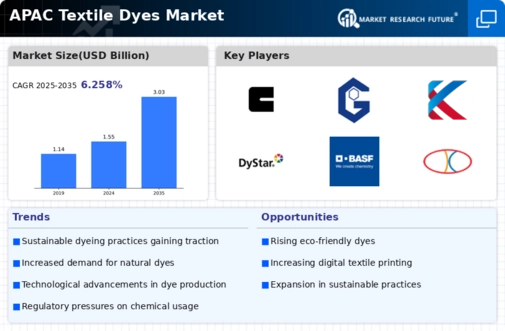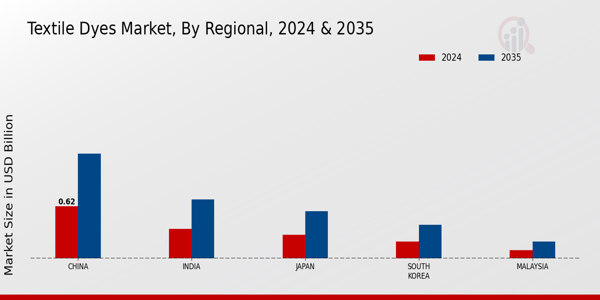The APAC Textile Dyes Market has experienced notable growth and evolution as nations within this region progress towards establishing themselves as major players in the global textiles industry. Compounded by increasing demand from the fashion and apparel sectors, the competitive landscape is characterized by a mix of established firms and emerging companies that vie for market share.
Factors driving competition include innovation in product formulations, sustainability practices, regulatory compliance, and branding strategies. Companies are strategically focusing on enhancing their service offerings and expanding their presence in emerging economies, indicating that competition in the APAC Textile Dyes Market will continue to intensify as stakeholders seek to leverage regional growth opportunities.
Clariant stands out in the APAC Textile Dyes Market due to its broad portfolio of specialty chemicals tailored for textile applications. The company's strength lies in its commitment to innovation and sustainability, notable in its development of eco-friendly dyeing solutions. Clariant boasts a significant market presence across various APAC countries, leveraging its advanced research and development capabilities to meet the diverse needs of local textile manufacturers.
The company's emphasis on providing tailored solutions and technical support has reinforced its reputation as a trusted partner within the industry. Furthermore, Clariant has effectively navigated regulatory landscapes, showcasing its ability to adapt to stringent environmental requirements, thus enhancing its competitive edge in the region.
Singer Colors has made a strong impression in the APAC Textile Dyes Market, priding itself on its extensive range of dye products, which cater to numerous applications within textile manufacturing. The company’s strengths include its robust distribution network and customer-centric approach, allowing for quick responses to market trends and client needs.
Singer Colors emphasizes high-quality dyes that enhance color brilliance and consistency, driving demand among textile producers. Additionally, the company has engaged in strategic partnerships and collaborations aimed at bolstering its innovative capacity and expanding its market reach.
In terms of mergers and acquisitions, Singer Colors has strategically aligned itself with industry peers to enhance capabilities and increase product offerings, reinforcing its position in the competitive landscape of the APAC region. Through these initiatives, Singer Colors continues to retain a significant foothold within the textile dyes market, positioning itself favorably against its competitors.



















Leave a Comment